The OSIRIS-REx asteroid sample return mission, under the direction of Principal Investigator Dante Lauretta, continues to make steady progress. On December 9, the public countdown clocks for the mission were turned on. On that day, the time until the start of the September 2016 launch window dropped to 999 days, and the countdown began.
In early April, the mission passed its Critical Design Review (CDR), a major milestone for a spacecraft program: OSIRIS REx Closer to Probing the Universe.
OSIRIS-REx is scheduled to bring back at least 60 grams of material from the primitive asteroid Bennu in 2023.


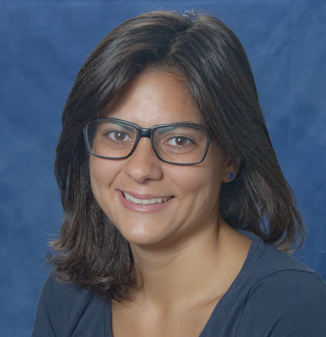
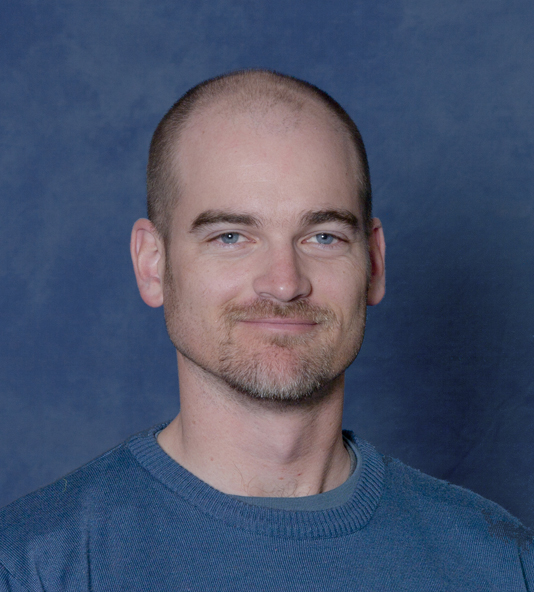 Staff Scientist Eric Christensen is Director of the
Staff Scientist Eric Christensen is Director of the 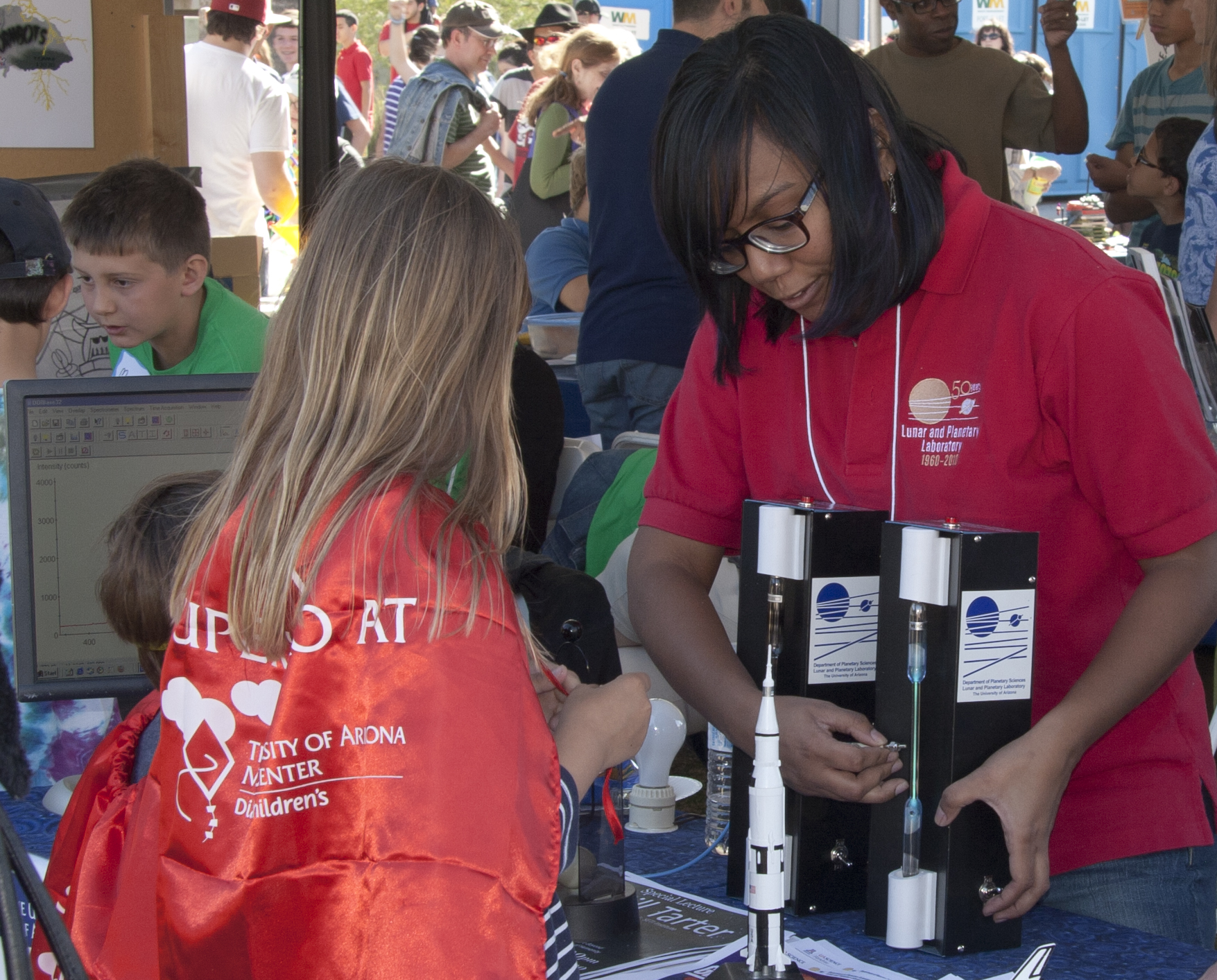
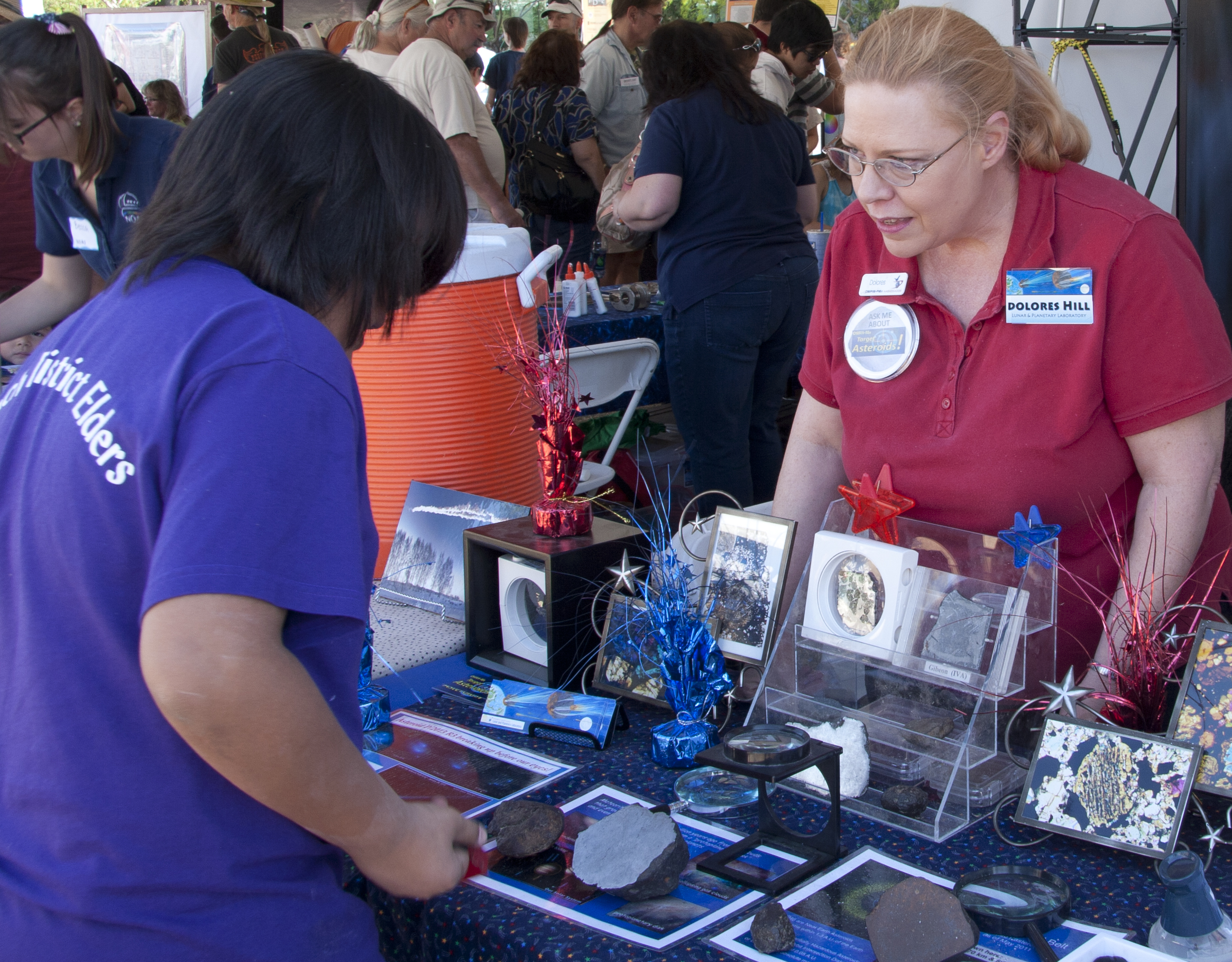

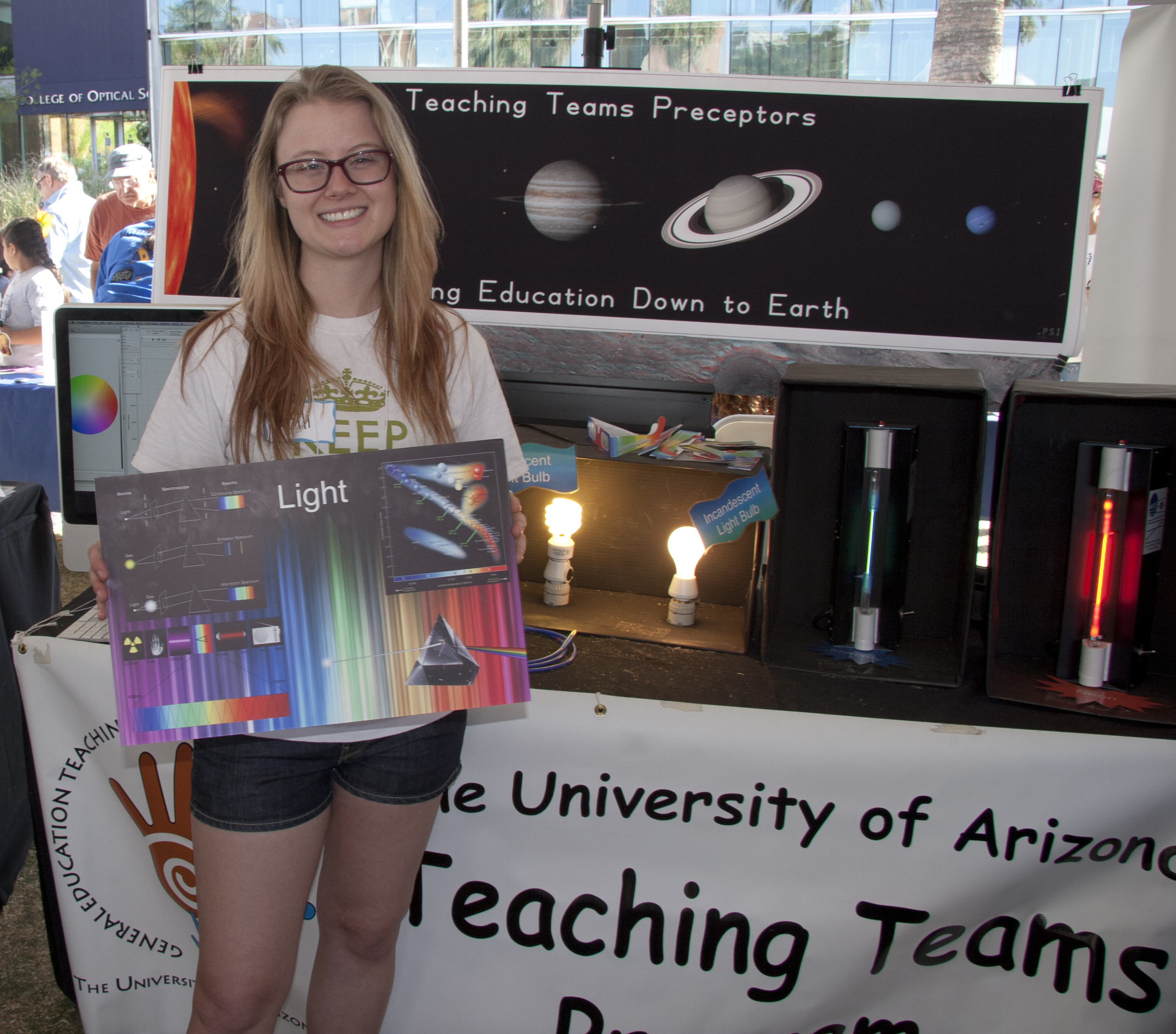
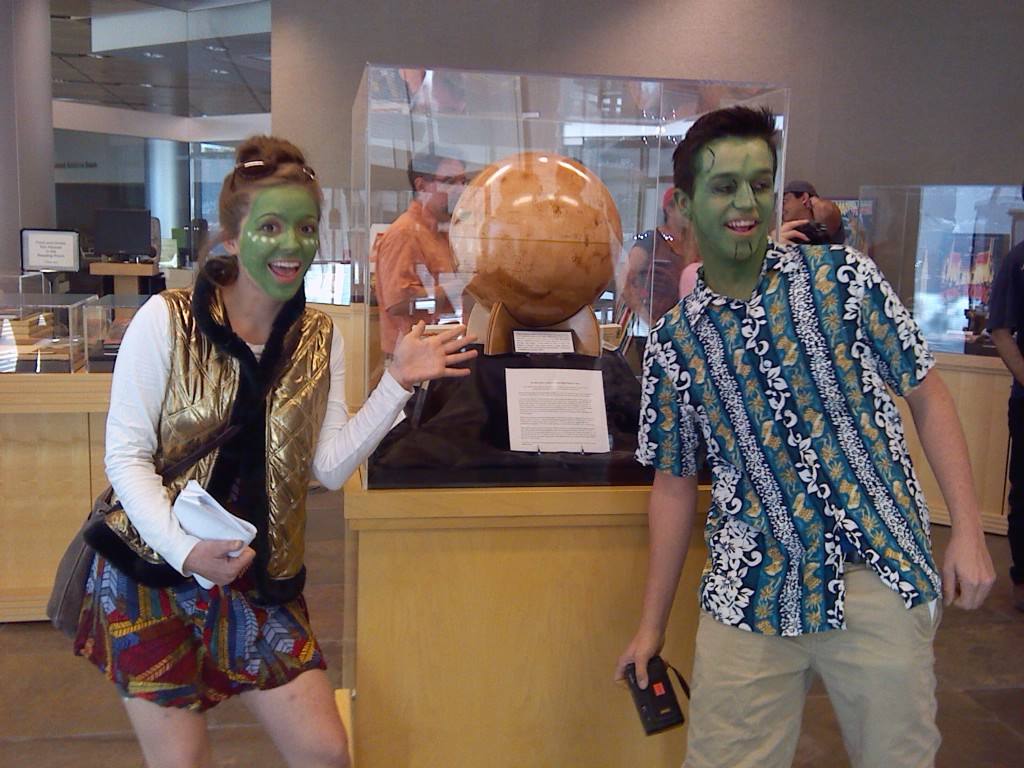
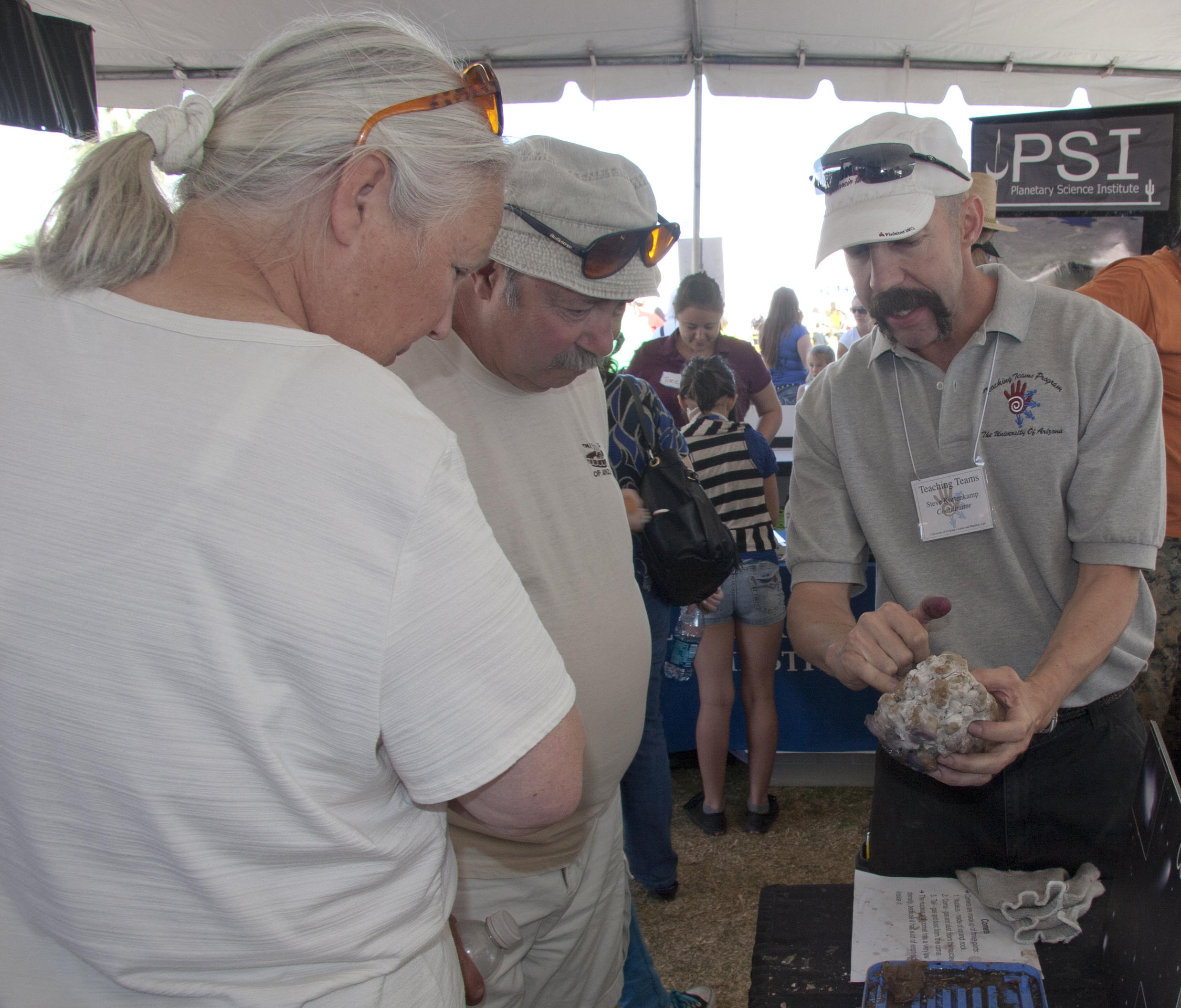


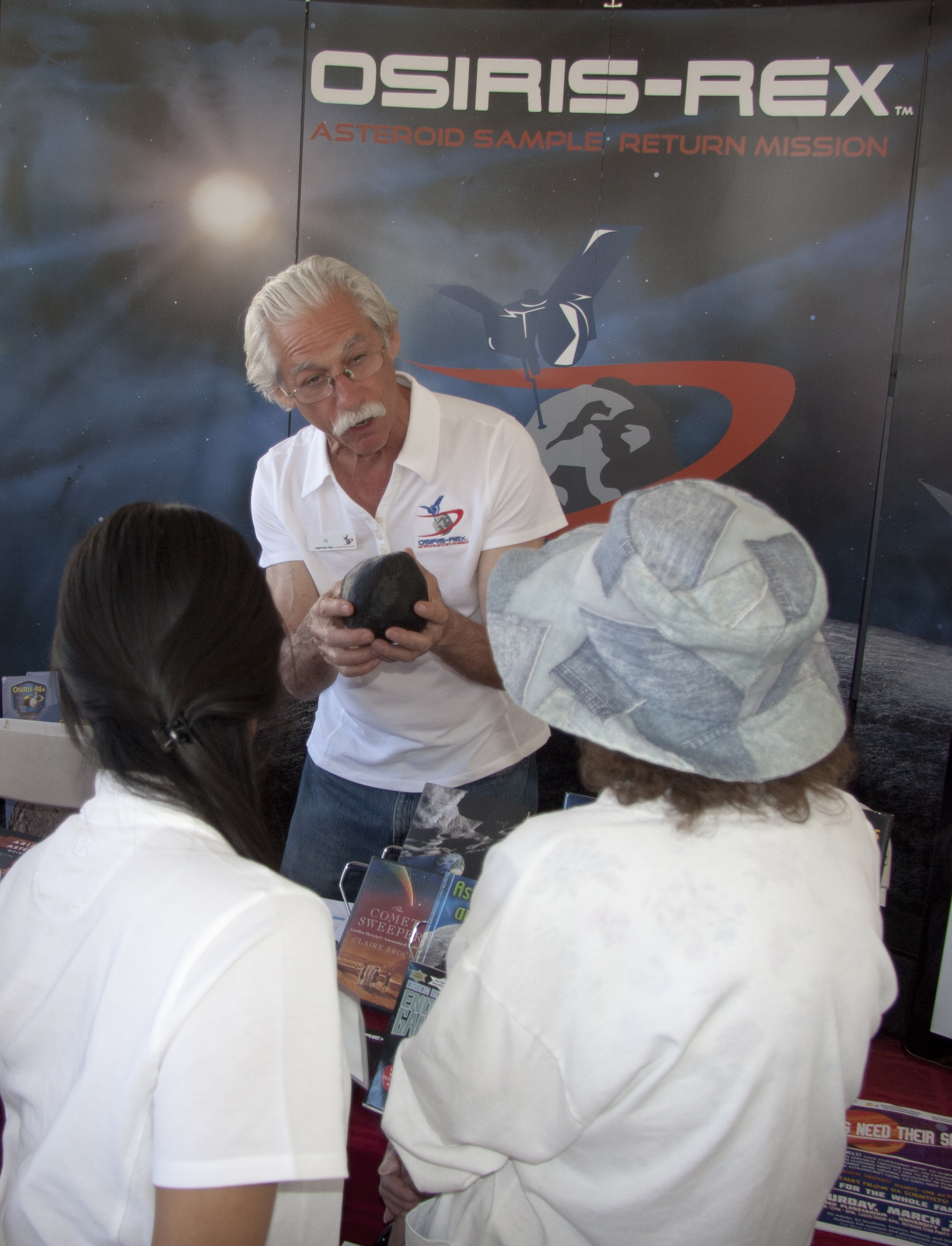
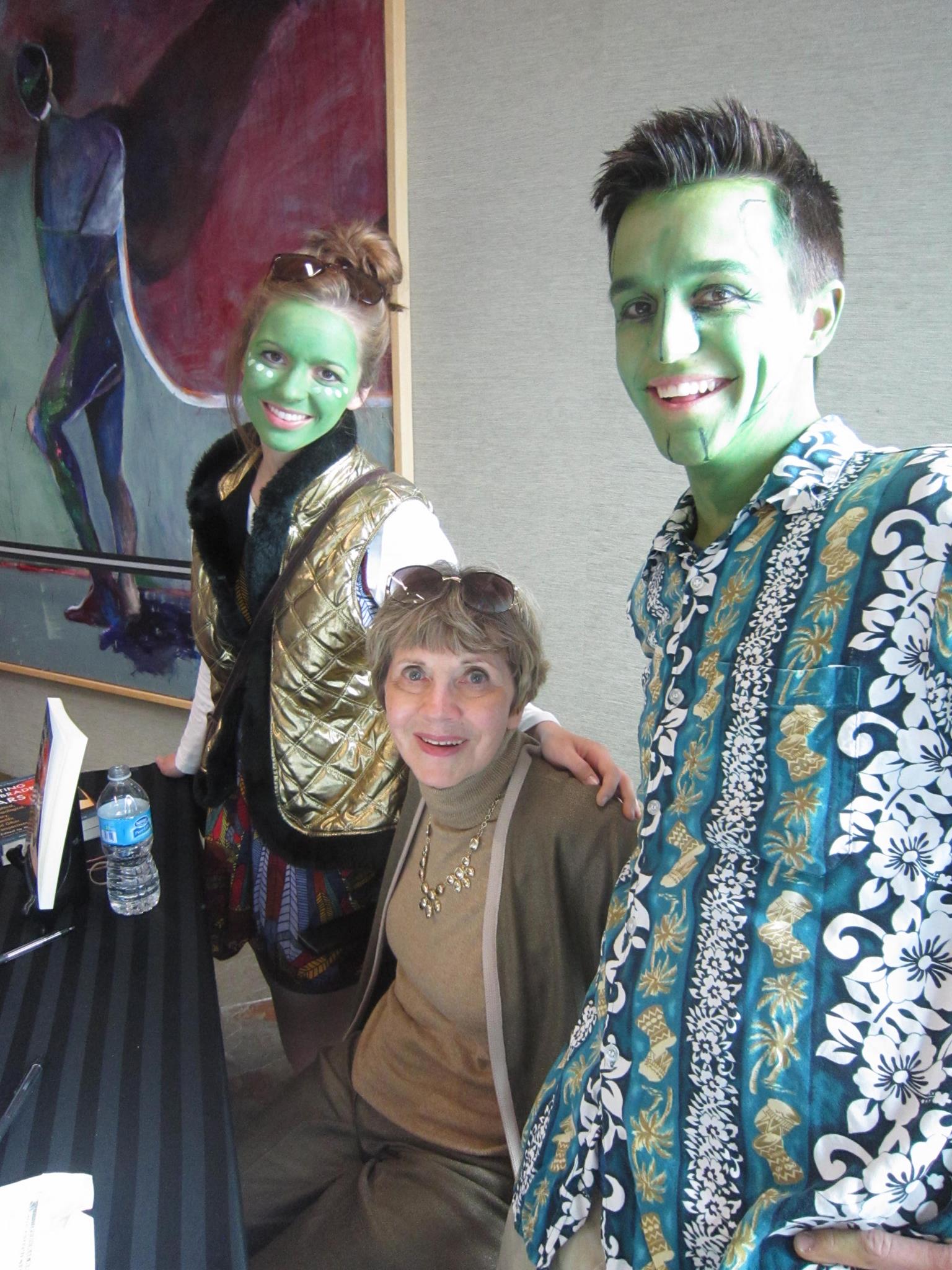
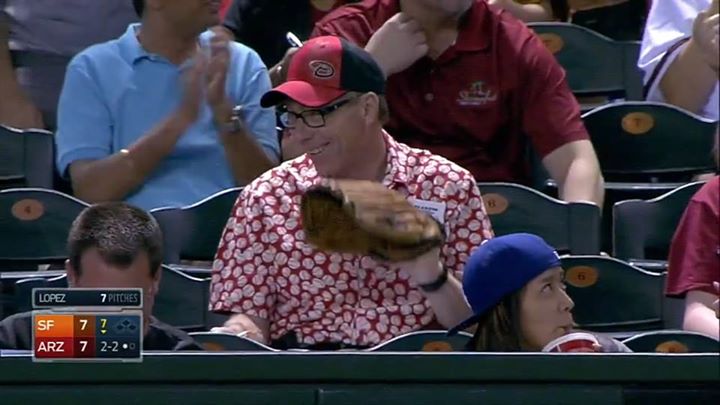
 ions to Ken Domanik, recipient of this year's LPL Appointed Personnel Staff Excellence Award, and to Bertha Orosco, recipient of the 2014 Classified Staff Excellence Award!
ions to Ken Domanik, recipient of this year's LPL Appointed Personnel Staff Excellence Award, and to Bertha Orosco, recipient of the 2014 Classified Staff Excellence Award!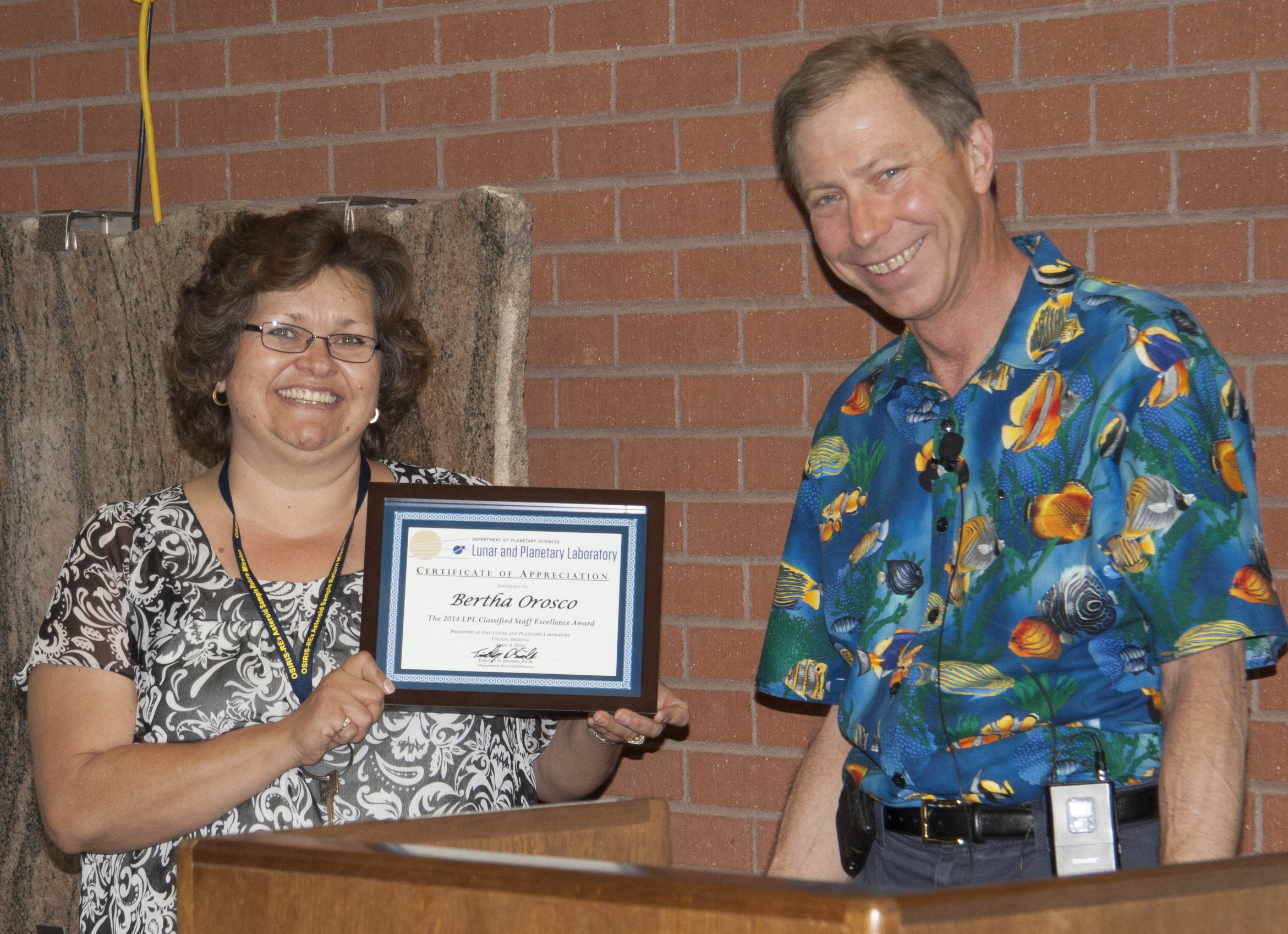 Bert is Administrative Associate for the LPL Academic Office, having been promoted this year from Administrative Assistant. Bert does it all and does it with a smile, going above and beyond (and rarely stopping to take a lunch break). She continues to build upon her own skills to improve processes and procedures that save the department time and money, keep us organized and on track, and get us reimbursed and fed. Some examples of this year's accomplishments:
Bert is Administrative Associate for the LPL Academic Office, having been promoted this year from Administrative Assistant. Bert does it all and does it with a smile, going above and beyond (and rarely stopping to take a lunch break). She continues to build upon her own skills to improve processes and procedures that save the department time and money, keep us organized and on track, and get us reimbursed and fed. Some examples of this year's accomplishments: Christa L. Van Laerhoven successfully defended her dissertation titled "Multi-Planet Extra-Solar Systems: Tides and Classical Secular Theory" on April 16. Christa began her career as a graduate student in 2008, with two years of support from a Canadian NSERC (National Science and Engineering Research Council of Canada) Fellowship. She was the recipient of a NESSF (NASA Earth and Space Sciences Fellowship) for 2012/2013 and 2013/2014. During her time as a graduate student, Christa also earned the PTYS Graduate Teaching Excellence Award (Fall 2011), and received a
Christa L. Van Laerhoven successfully defended her dissertation titled "Multi-Planet Extra-Solar Systems: Tides and Classical Secular Theory" on April 16. Christa began her career as a graduate student in 2008, with two years of support from a Canadian NSERC (National Science and Engineering Research Council of Canada) Fellowship. She was the recipient of a NESSF (NASA Earth and Space Sciences Fellowship) for 2012/2013 and 2013/2014. During her time as a graduate student, Christa also earned the PTYS Graduate Teaching Excellence Award (Fall 2011), and received a